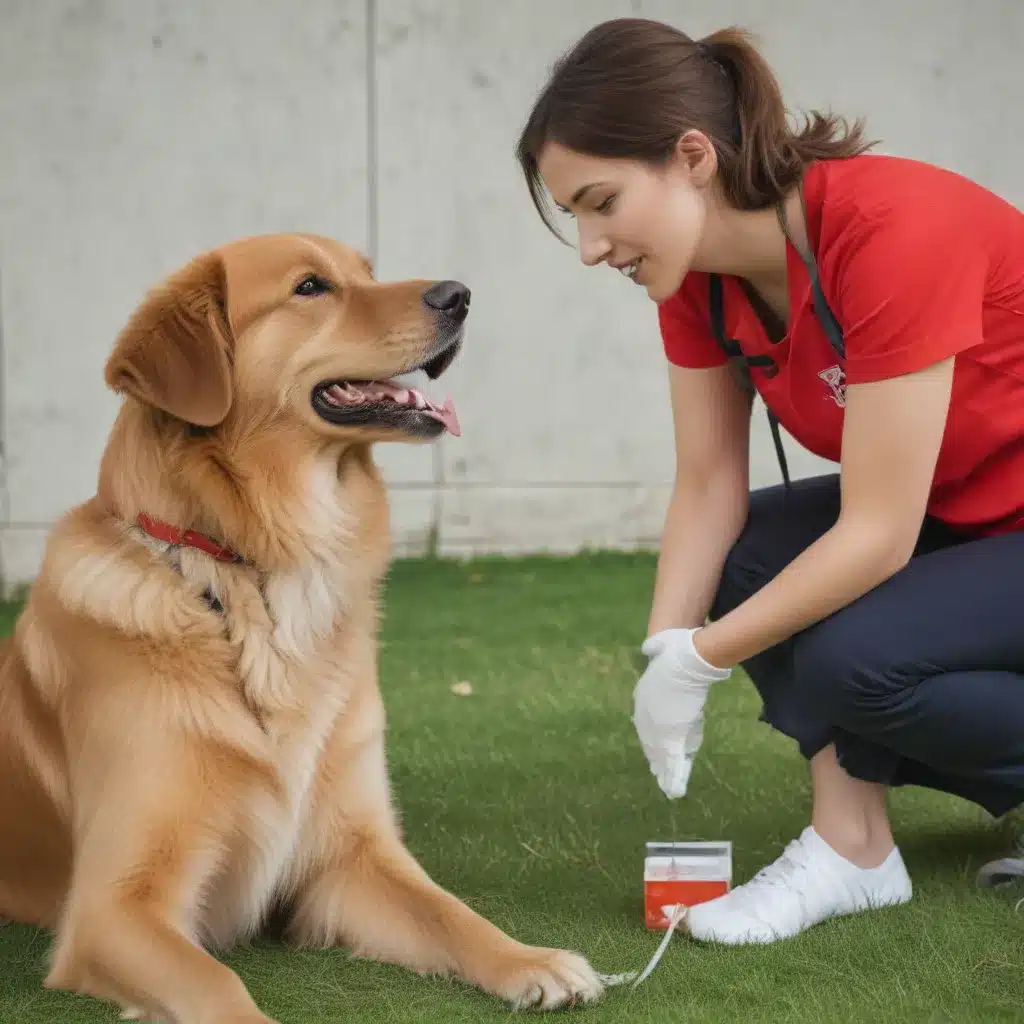
The Barefoot Veterinarian’s Guide to Keeping Your Pup Safe
I’ll never forget the day when one of my regular patients, a rambunctious golden retriever named Buddy, came stumbling into my clinic. His owner, a frantic middle-aged woman, was nearly in tears as she explained that Buddy had somehow managed to get his paws on a stash of chocolate-covered almonds and wolfed them down before she could stop him.
As a veterinarian, I’ve seen my fair share of pet emergencies over the years. But the panic and uncertainty that often accompanies these situations is something I can certainly empathize with. That’s why I’ve made it my mission to equip pet owners like you with the essential first aid skills needed to handle common canine crises – whether it’s a case of chocolate toxicity, a nasty fall down the stairs, or a heat stroke episode on a sweltering summer day.
Poison Proofing Your Pup
Let’s start with that chocolate scare. As you probably know, chocolate contains substances called methylxanthines that are toxic to dogs. The darker the chocolate, the more dangerous it is. Signs of chocolate poisoning can include vomiting, diarrhea, hyperactivity, abnormal heart rhythm, seizures, and even death.
According to the AVMA, the first thing you should do if you suspect your pup has ingested chocolate or any other potentially harmful substance is to call your veterinarian or the pet poison control hotline immediately. They can advise you on the appropriate first aid steps and whether your dog needs to be seen right away.
In the meantime, try to identify the specific type and amount of chocolate your dog consumed, and have that information ready to share with the experts. Collecting any vomited or chewed material and placing it in a sealable plastic bag can also be helpful. Remember, time is of the essence when it comes to treating toxin exposures, so don’t hesitate to get professional guidance.
Handling Hemorrhages and Other Emergencies
Of course, chocolate poisoning isn’t the only threat pet owners need to be prepared for. The AVMA also emphasizes the importance of recognizing and responding to signs of internal bleeding, eye injuries, heat stroke, and choking.
Internal bleeding, for instance, can manifest through nosebleeds, bloody vomit or urine, pale gums, and a rapid, weak pulse. In these cases, you’ll want to apply firm, direct pressure to the bleeding site using a clean cloth or towel. Eye injuries, on the other hand, are particularly delicate and should be treated with the utmost care to avoid further damage to your pup’s sight.
Heatstroke, a potentially life-threatening condition, can be identified by rapid breathing, excessive drooling, lethargy, and gum discoloration. The key is to lower your dog’s body temperature as quickly as possible by moving them to a cool, shaded area and applying cool (not cold) water to their fur. And if you ever encounter a choking pet, look for pawing at the mouth, choking sounds, and blue-tinged lips or tongue – then proceed with abdominal thrusts or back blows to dislodge the obstruction.
I Have Dogs is a great resource for dog owners looking to brush up on their first aid skills. Their comprehensive website covers all the essential techniques for handling common emergencies and provides step-by-step guides to ensure you’re prepared when the unexpected happens.
Staying Cool, Calm, and Collected
Of course, even with the best preparation, pet emergencies can be incredibly stressful and overwhelming. That’s why it’s so important to try to remain as calm and collected as possible. After all, your dog will pick up on your energy, and panic or fear can make even the gentlest pup unpredictable or even dangerous.
Breathe deeply, speak in a soothing tone, and remember that any first aid you provide should be followed by immediate veterinary care. First aid is not a substitute for professional medical treatment, but it can quite literally make the difference between life and death in a crisis situation.
So, the next time you’re cuddling up on the couch with your canine companion, take a moment to review these essential first aid skills. With a little preparation and a lot of love, you’ll be equipped to handle whatever comes your way – whether it’s a bout of chocolate toxicity or a nasty fall down the stairs. Your pup’s safety and wellbeing are in good hands.
Putting Your Skills to the Test
Of course, knowing the theory is one thing, but putting it into practice is another matter entirely. That’s why I always recommend that pet owners seek out hands-on first aid training, either through their local veterinary clinic or organizations like the American Red Cross.
CPR Certification Now, for example, offers comprehensive online courses that cover everything from wound care to pet CPR. And many veterinary schools and animal welfare groups also host in-person workshops and seminars to help pet owners feel confident and prepared for emergencies.
Just like with human first aid, regular practice and refresher courses are key to keeping your skills sharp. After all, you never know when that knowledge might come in handy – and the peace of mind it provides is priceless.
So, what are you waiting for? Grab your leash, head to your nearest pet-friendly first aid training, and get ready to become the canine crisis hero your furry friend deserves. With a little preparation and a whole lot of love, you’ll be able to navigate even the most harrowing situations with grace and confidence. Your pup’s safety is in good hands.

